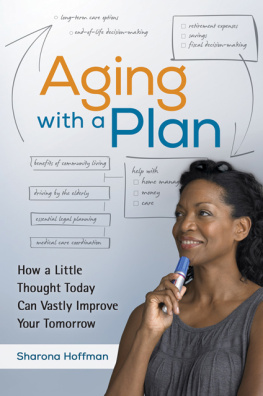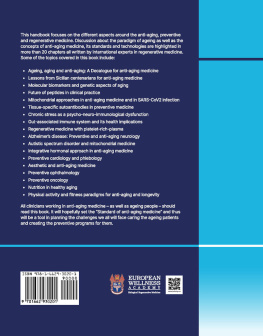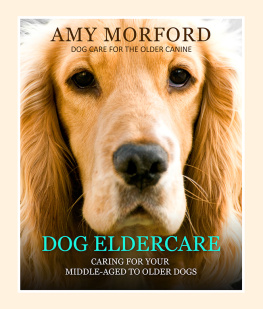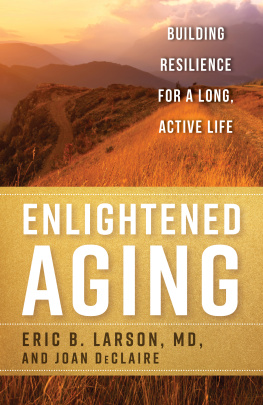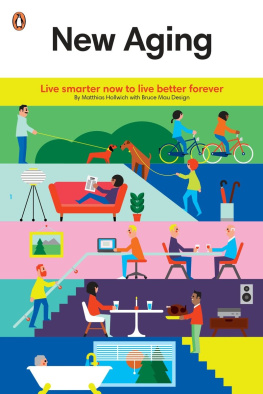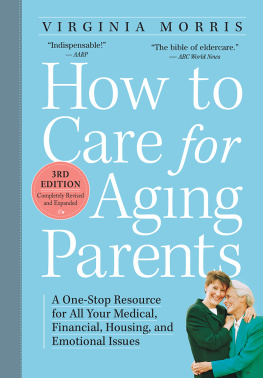

Copyright 2015 by Sharona Hoffman
All rights reserved. No part of this publication may be reproduced, stored in a retrieval system, or transmitted, in any form or by any means, electronic, mechanical, photocopying, recording, or otherwise, except for the inclusion of brief quotations in a review, without prior permission in writing from the publisher.
Library of Congress Cataloging-in-Publication Data
Hoffman, Sharona.
Aging with a plan : how a little thought today can vastly improve your tomorrow / Sharona Hoffman.
pages cm
Includes bibliographical references and index.
ISBN 978-1-4408-3890-3 (alk. paper) ISBN 978-1-4408-3891-0 (ebook) 1. RetirementPlanning. 2. Older peopleCare. I. Title.
HQ1062.H634 2015
332.024014dc23 2015001812
ISBN: 978-1-4408-3890-3
EISBN: 978-1-4408-3891-0
19 18 17 16 15 1 2 3 4 5
This book is also available on the World Wide Web as an eBook.
Visit www.abc-clio.com for details.
Praeger
An Imprint of ABC-CLIO, LLC
ABC-CLIO, LLC
130 Cremona Drive, P.O. Box 1911
Santa Barbara, California 93116-1911
This book is printed on acid-free paper 
Manufactured in the United States of America
In memory of my parents,
Morton and Aviva Hoffman
Contents
Acknowledgments
First and foremost I thank the many relatives and friends who shared their lives and their stories with me. They have taught me so much about the difficulties and triumphs that people experience at every stage, but especially when they care for elderly relatives or face their own end-of-life challenges. To my parents and mother-in-law, I am indebted not only for teaching me countless life lessons but also for their unflagging love, support, and encouragement. I will miss the three of them terribly.
Case Western Reserve University (CWRU) has been my intellectual home for over 15 years and has given me the opportunity to have an incredibly fulfilling career. I am grateful for being included among its faculty and also for financial support for this book project. A CWRU ACES Advance Opportunity Grant enabled me to do early research, and a law school summer grant and sabbatical allowed me to complete the project.
The Robert Wood Johnson Foundation selected me for a 2013 Scholar in Residence Fellowship to work with the Oregon Health Authority on the regulation of in-home care. That experience provided valuable insights into this important source of services for the elderly. During my sabbatical semester in 2014, Emory University School of Law welcomed me as a visiting scholar and supplied a beautiful office space in which it was a pleasure to work on the manuscript.
I am grateful to the ethics committee at Clevelands University Hospitals Case Medical Center for exposing me to the complexities of numerous elder care issues and enabling me to be an active participant in discussions of treatment controversies as well as decision making for incapacitated patients without proxies. I have also learned much from staff members at a number of continuing care retirement communities that I visited and hospices that cared compassionately for my loved ones.
Several readers of early drafts provided comments that helped me improve the manuscript significantly. They are Jaime Bouvier, Naomi Cahn, Tony Moulton, and Cassandra Robertson. Jennifer Armstrong provided detailed edits and suggestions that were invaluable. Leon Gabinet spent hours with me discussing wills, trusts, and estates, and these discussions provided a strong foundation for my treatment of these matters in the book. Numerous other colleagues offered inspiration and advice and ensured that I would not lose faith in this project.
A special thank you to two Cowen Research Fellows at CWRU School of Law whose work was vital to this book: Stephanie Corley and Tracy (Yeheng) Li. Halden Schwale also provided very capable research assistance.
My thanks go also to my fabulous team of editors: Mary Bearden, Nicholle Lutz, and Nicole Azze. I am particularly grateful to my acquisition editor, Catherine LaFuente, for her enthusiasm and patience in answering my many questions.
Finally, my deepest thanks go to my husband, Andy. For the past decade, he has been a loving husband and an intellectual partner. He has made my work better and my life far richer.
Introduction
As often happened in those days, my lunchtime conversation with a colleague drifted to the subject of elder care. My husband and I had been immersed in caring for elderly relatives who were in their mid-eighties and beyond. During an 18-month period in 2013 and 2014, we lost my mother who died at the age of 84, Andys mother who died at 93, and my father who died at 87. My friend revealed that she was coordinating care for her mother, who was in her nineties, had advanced dementia, and lived in another state. I said that sometimes I felt that our parents were lucky because at least they had us to help them, and that I have begun to worry about my own old age because Andy and I have no children. Then my friend surprised me by saying that she enjoys a very close relationship with her only son, but what she fears most about aging is that he will come to dread visiting her and will consider contact with her to be an unwelcome obligation. Having a devoted child, therefore, was hardly a comfort when she contemplated her later years.
This book, Aging with a Plan, began with my own efforts to identify strategies that I could adopt to minimize the potential pitfalls of aging. It also grew out of a desire to help my contemporaries who may find themselves suddenly immersed in caring for elderly relatives, a sometimes overwhelming task for which little in life prepares us. It is meant to be a concise but comprehensive resource for middle-aged people who have much to gain from thinking ahead.
In the process of researching and writing, I have learned a great deal. Too many elderly individuals refuse needed professional care giving because of its costs and the loss of autonomy it involves; some undergo aggressive medical interventions that exacerbate rather than improve their conditions; and others end up in institutional settings that are inadequately staffed and whose services at times border on neglect. Yet I have also found much reassurance. I am convinced that many other people in their forties, fifties, and early sixties can benefit from the knowledge I gained and from investing some effort in planning for their old age as well as for that of their loved ones. As I have learned the hard way, in the midst of crisis, it is very difficult to make the best possible decisions if you have never contemplated the matter at hand.
WHY I WROTE THE BOOK
Shoot me before I get to be like my [mother, aunt, grandfather] is an only half-joking comment Ive often heard from individuals who are involved in caring for the elderly. Yet, as much as Americans plan for their futures earlier in life, few of us dare think about and plan for frailty, which could extend over years or even decades of our lives. Aging with a Plan aims to change that.
The book is anchored in both my personal experience and my professional expertise as a professor of law and bioethics at Case Western Reserve University. I am also a member of the Ethics Committee at Clevelands University Hospitals, which often grapples with difficult treatment decisions for incapacitated elderly persons who do not have other decision makers. My interest in issues of health law, bioethics, and care giving stems in part from a 15-month period in the mid-1990s in which I suffered my own medical crisis and shortly thereafter became a caregiver for my then 65-year-old mother, who underwent extensive treatment for breast cancer.
Next page
